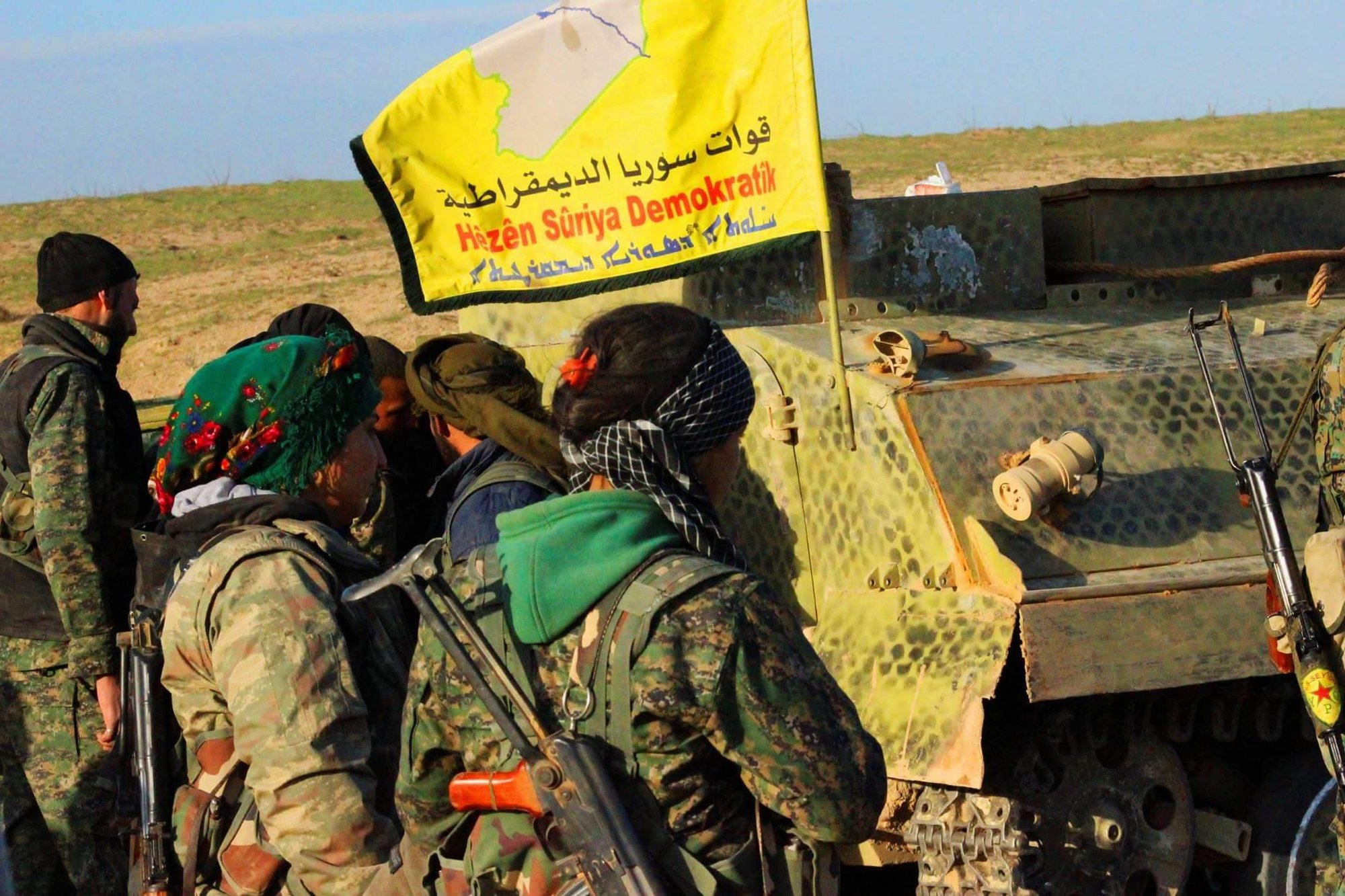
Kurdish YPG Fighters Syrian Democratic Forces (SDF). Photo courtesy of KurdishStruggle/Flickr.
When the Syrian revolution began, Ali Kilzy was a student teacher in Manbij, Syria. He was passionate about teaching people and about the pursuit of knowledge. The Arab Spring inspired many Syrians to take to the streets and demand that Syrian dictator Bashar al-Assad step down. Kilzy was among them.
He was a pacifist, believing deeply in nonviolent revolution. However, the regime opened fire on protesters. The increasing violence of the revolution tested everything Kilzy believed about himself and his country. He tried to stay out of the fighting as much as he could, until he finally decided to pick a side in the armed conflict.
Today he’s a member of the Syrian Democratic Forces and works as the director of editing in the group’s press office. Kilzy has had a frontrow seat as a participant, as a witness, and as a documentarian of a war that is difficult for outsiders to access — even if it comes from a certain point of view. “It’s true that I didn’t take up arms,” he said. “But working at the press office, I showed the people what ISIS has done and the reality of who and what they are.”
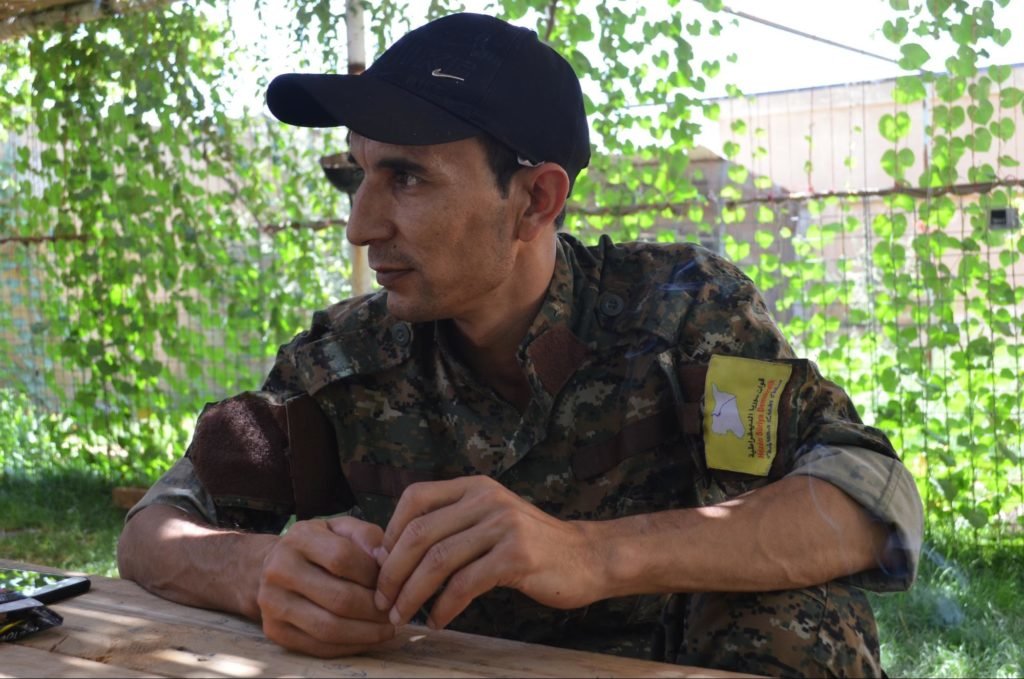
His journey from pacifist activist to working for the press wing of a U.S.-backed army of Syrian fighters is a unique window into the shifting tides of Syria’s long, bloody conflict.
At the beginning, Kilzy was optimistic. “We were a group of young people who wanted an unarmed revolution against the regime, a clean revolution, not with guns,” he recalled. “We were mostly teachers, doctors, engineers, and we wanted a peaceful revolution against the regime.”
He quickly lost his job — the regime didn’t want pro-democracy activists working at schools and potentially influencing the youth. He had recently graduated from college and education was his passion, but he continued marching.
“We wanted to change the regime and demanded the freedom of the prisoners,” he said.
But when forces loyal to President Bashar al-Assad fired on protesters, many abandoned nonviolent means. Kilzy, despite his insistence on peaceful revolutionary means, had sympathy for those who took up arms in the early days. “In many ways, the regime forced many people to fight back against them,” he said.
The Syrians who armed themselves formed the Free Syrian Army, the ranks of which were soon bolstered by military defectors who refused to fire on their fellow citizens. These veterans brought their weapons, training, and leadership experience to the rebellion. The FSA was becoming a real threat to the regime. To fight back, Assad called on Iran for help. Iranian-backed groups such as Hezbollah sent fighters to aid the government, and Iranian advisers began aiding beleaguered Syrian Army troops.
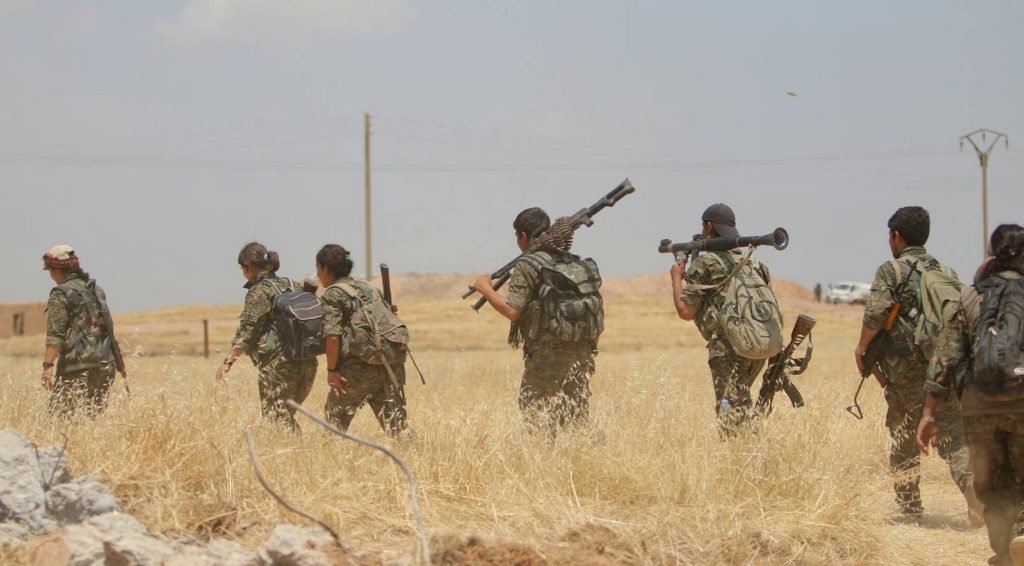
But even as the conflict became more violent, Kilzy and his compatriots refused to abandon their pacifism. “The only weapons we had as a group was writing anti-regime slogans on the walls at night and producing weekly pamphlets which talked about current affairs and the revolution,” he explained. “We wanted to redirect the revolution in other places far away from Manbij; we believed the revolution had lost sight of its goals.”
The FSA was plagued by infighting. Various factions received support from Turkey, the Gulf States, and Western countries — who often had competing interests. Some factions held extreme Islamist views and were attracting foreign jihadist fighters with similarly extreme views to fight. When then-President Barack Obama announced that the U.S. military would not intervene even after the regime crossed the “red line” of using chemical weapons, many Syrians felt betrayed.
Unknown to the American public both U.S. and French jets were fueled up and ready to commence bombings in support of the rebels and stood down at the last minute, leaving the rebels to fend for themselves.
…the regime didn’t want pro-democracy activists working at schools and potentially influencing the youth.
Then Russia entered the conflict on the side of the regime, and the FSA splintered even further. The remnants of the Free Syrian Army today are often funded heavily by Turkey and regional powers. Many Syrian activists and former rebels accuse Turkey in particular of backing extremist factions to wipe out moderate and pro-democratic factions to turn the FSA into a proxy force. Some fighters have been reduced to essentially living as mercenaries rather than revolutionaries.
“The main mistake of the early Syrian Revolution and the Free Syrian Army is that they were united in their aim to change the regime, but they had no vision for how to do that or what actually came next,” said Kilzy. “They now stand for the regional country’s aims, not for their own … ultimately the revolution became a failure.”
When ISIS took control of Manbij, the militants forcibly recruited all the teachers in the city to teach their version of Sharia law. Kilzy refused and fled to Turkey with his wife and children. It seemed his dream of democracy had been shattered.
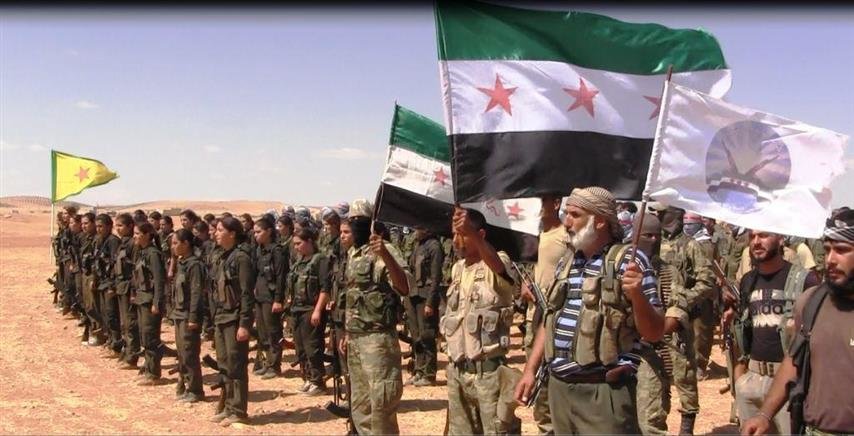
But in Northeast Syria the Kurdish-led People’s Protection Units — the YPG — were engaged in another revolution of sorts. They chose to side with neither the regime nor the Free Syrian Army, instead carving out their own territory based around the ideology of “democratic confederalism.” Their ideology aligned closely with that of the Kurdish Workers Party in Turkey, and the Turkish capital of Ankara was quick to view their “Rojava Revolution” as an extension of the Kurdish insurgency in their own country.
Many FSA factions criticized the YPG for not fighting the regime. Despite some brief battles in 2012, the YPG and Syrian military essentially avoided fighting each other. To this day, both control sections of the city Qamishlo and maintain an uneasy truce (though there has still been conflict, such as a brief but bitter fight in 2016).
However, as ISIS emerged as a greater threat in 2014, the YPG began forming alliances with several FSA factions to fight the group. They fought side-by-side at the battle of Kobani — even receiving American close-air support. In 2015, the YPG and its new allies formed the Syrian Democratic Forces (SDF), a multi-ethnic alliance of Syrian armed groups.
Kurds made up most of the leadership — and a significant portion of the fighters — but Arabs, Syrian Turkmen, Assyrians, and others were marching into battle alongside them against ISIS. They also began receiving direct military support from the U.S.-led coalition with advisers, guns, and vehicles flowing in. When the SDF began marching on Manbij in 2016, Kilzy returned.
“I saw with my own eyes how ISIS targeted the civilians,” he said. “How they wanted all of the people to die in these battles.” As the SDF drove ISIS out of the city, residents took to the streets to celebrate. Photos emerged of women burning the Niqabs ISIS had forced them to wear and men trimming their beards, and residents smoked cigarettes that had been forbidden under the jihadist rule.
As he watched the celebrations in Manbij, Kilzy began talking to the SDF fighters. “I asked them about their goals, and I became convinced that the only real democratic project in the country rests with the SDF,” he said.
Photos emerged of women burning the Niqabs ISIS had forced them to wear and men trimming their beards…
He became so enamored with the SDF fighters that he offered to join. He became a combat correspondent, taking photos and writing about the battles for press releases. He accompanied fighters to the ISIS capital of Raqqa and documented the bloody battle.
“I wasn’t fighting, but I was frontline with the fighters,” he said. “I covered all the battles there and in Deir Ezzor, and I was there when Turkey invaded Afrin. I was always on the front line, all the way until Baghouz.”
Today, the SDF is trying to consolidate its gains. Kilzy’s hometown of Manbij remains a sometimes dangerous place as ISIS sleeper cells remain active in the city and surrounding country. Last year, a bomb killed four Americans in the town as they hunted for these cells.
Recently, video emerged depicting what appears to be a Kurdish member of the security forces abusing local Arabs in Manbij as a man in camouflage fatigues kicks a young woman. However the local Manbij Military Council — which is made up of both local Arabs and Kurds — insist the video is a fake produced by Turkish propagandists, and even human rights groups critical of the SDF seem to agree.
But there have been instances of racism and violence by Kurdish fighters against Arab civilians. In February 2018, a group of U.S. Marines provided medical care to wounded Arab civilians as Kurdish SDF fighters angrily tried to stop them, leading to a violent confrontation between the two sides that left one Marine wounded and a Kurdish fighter dead.
Such incidents have led critics to argue that the SDF is actually a Kurdish force using its members of other ethnicities to disguise the fact that it is first and foremost concerned with Kurdish interests at the expense of other groups. However, Kilzy insists that the SDF’s fight is for Syrians like him and those of every other ethnic group. “Those people who say the Kurds may be a threat to the Arab people — and many of them work for other regional countries like Turkey or Iran — they are serving regional countries’ agendas,” he said.
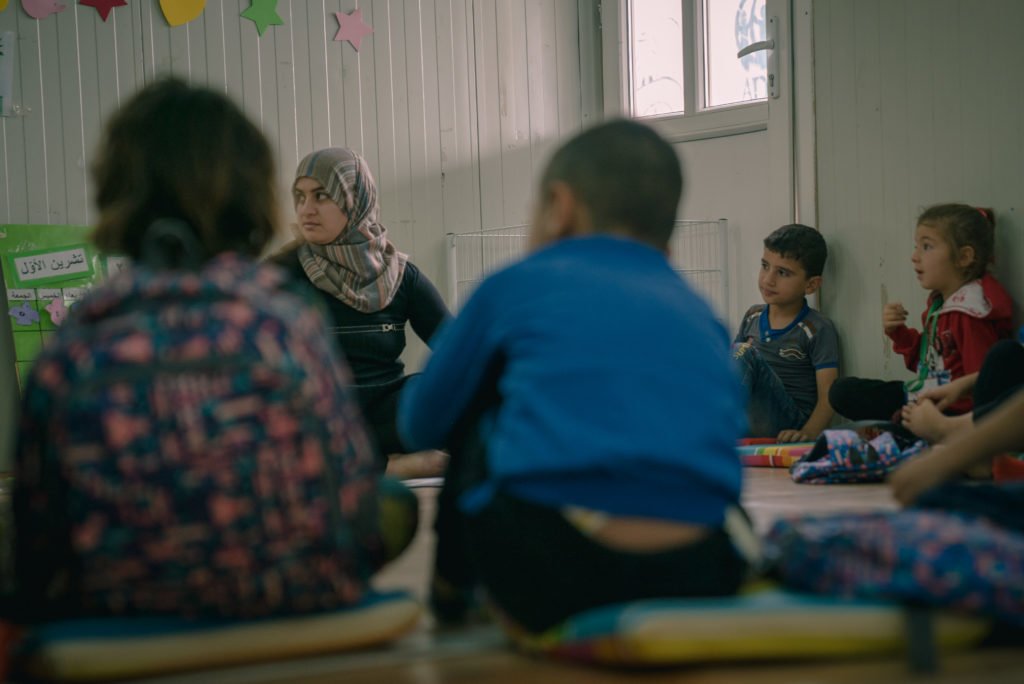
“I have visited lots of places that are now controlled by the SDF, and I’ve personally seen how many Arabs are directors and managers of important offices. At our press office, about 80 percent of people working in the press office are Arabs. We also have Turkmen, some Assyrians, all the people of Syria,” Kilzy said. “I’m now the head of editing for the press office. Lots of other Arabs hold very important, very sensitive roles in the SDF. This isn’t just a Kurdish movement.”
He said many people are still displaced and living as refugees in other countries. Many refugees fear death if they return to areas controlled by the Syrian regime. Lately, Lebanon and Turkey have increased forced deportations of Syrians back to regime-held territory where relatives often lose track of them. However, others are trying to move to Northeast Syria — though Kilzy and other fighters say Turkey and the regime try to stop them from doing so.
After Turkish forces invaded the SDF-controlled town of Afrin in 2018, they began building walls across sections of the border. Many residents of northeast Syria argue that the walls are meant to keep Kurds on either side of the border physically divided and prevent people from going to Rojava.
“If you look at the demographics of the area, Northeast Syria is one of the most diverse places in Syria — everyone is here,” said Kilzy. “I don’t like to talk about these ethnic differences. We have to think of ourselves as all one if we want to have a real democratic project.”

Kevin Knodell is a freelance journalist and author. His work has appeared at Foreign Policy, Playboy, Soldier of Fortune, and others. He’s the associate producer of the War College Podcast and a former contributing editor at Warisboring. He’s the co-author of the graphic novels The ‘Stan and Machete Squad, and he currently writes the Acts of Valor comic series for Naval History magazine.
BRCC and Bad Moon Print Press team up for an exclusive, limited-edition T-shirt design!
BRCC partners with Team Room Design for an exclusive T-shirt release!
Thirty Seconds Out has partnered with BRCC for an exclusive shirt design invoking the God of Winter.
Lucas O'Hara of Grizzly Forge has teamed up with BRCC for a badass, exclusive Shirt Club T-shirt design featuring his most popular knife and tiomahawk.
Coffee or Die sits down with one of the graphic designers behind Black Rifle Coffee's signature look and vibe.
Biden will award the Medal of Honor to a Vietnam War Army helicopter pilot who risked his life to save a reconnaissance team from almost certain death.
Ever wonder how much Jack Mandaville would f*ck sh*t up if he went back in time? The American Revolution didn't even see him coming.
A nearly 200-year-old West Point time capsule that at first appeared to yield little more than dust contains hidden treasure, the US Military Academy said.












